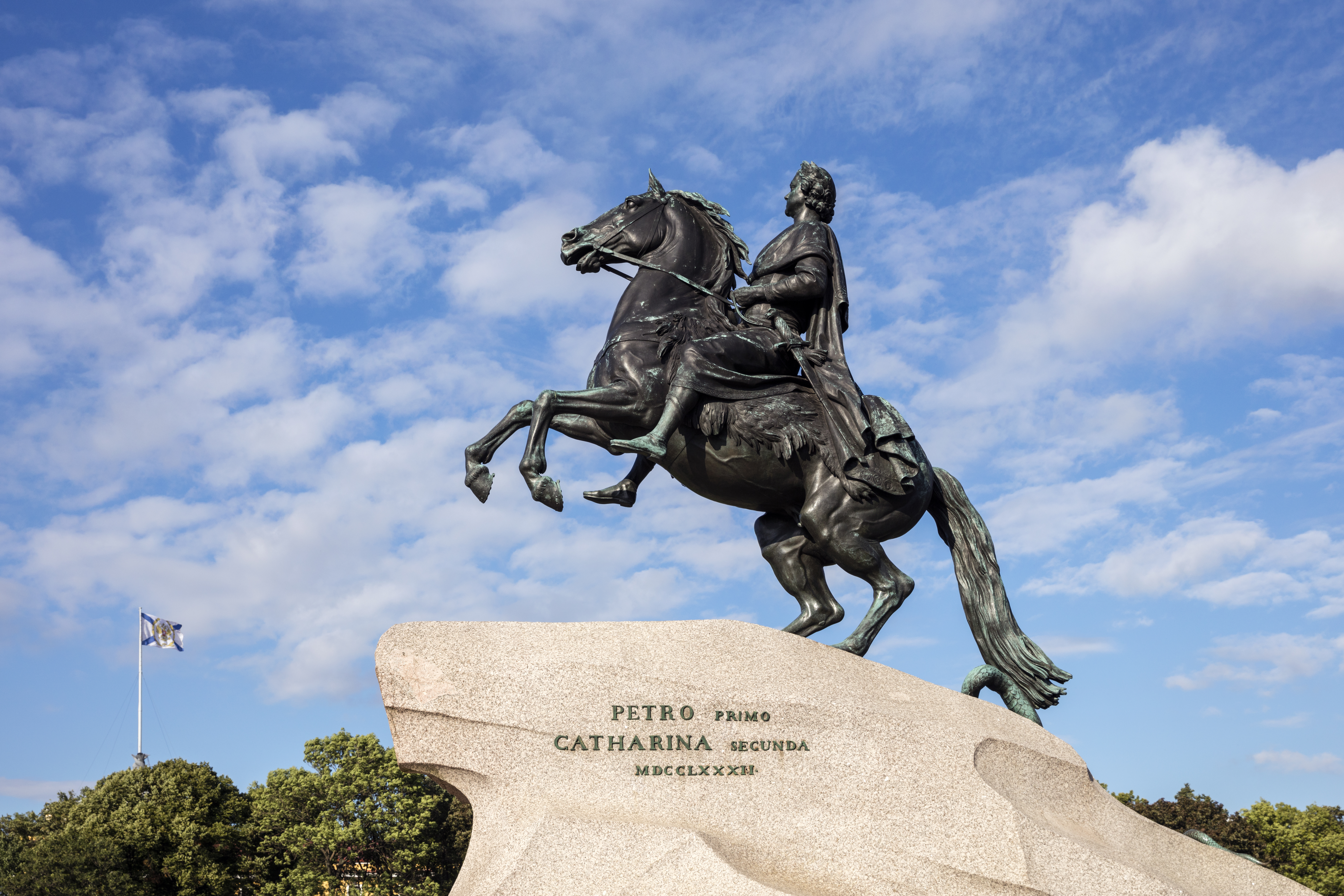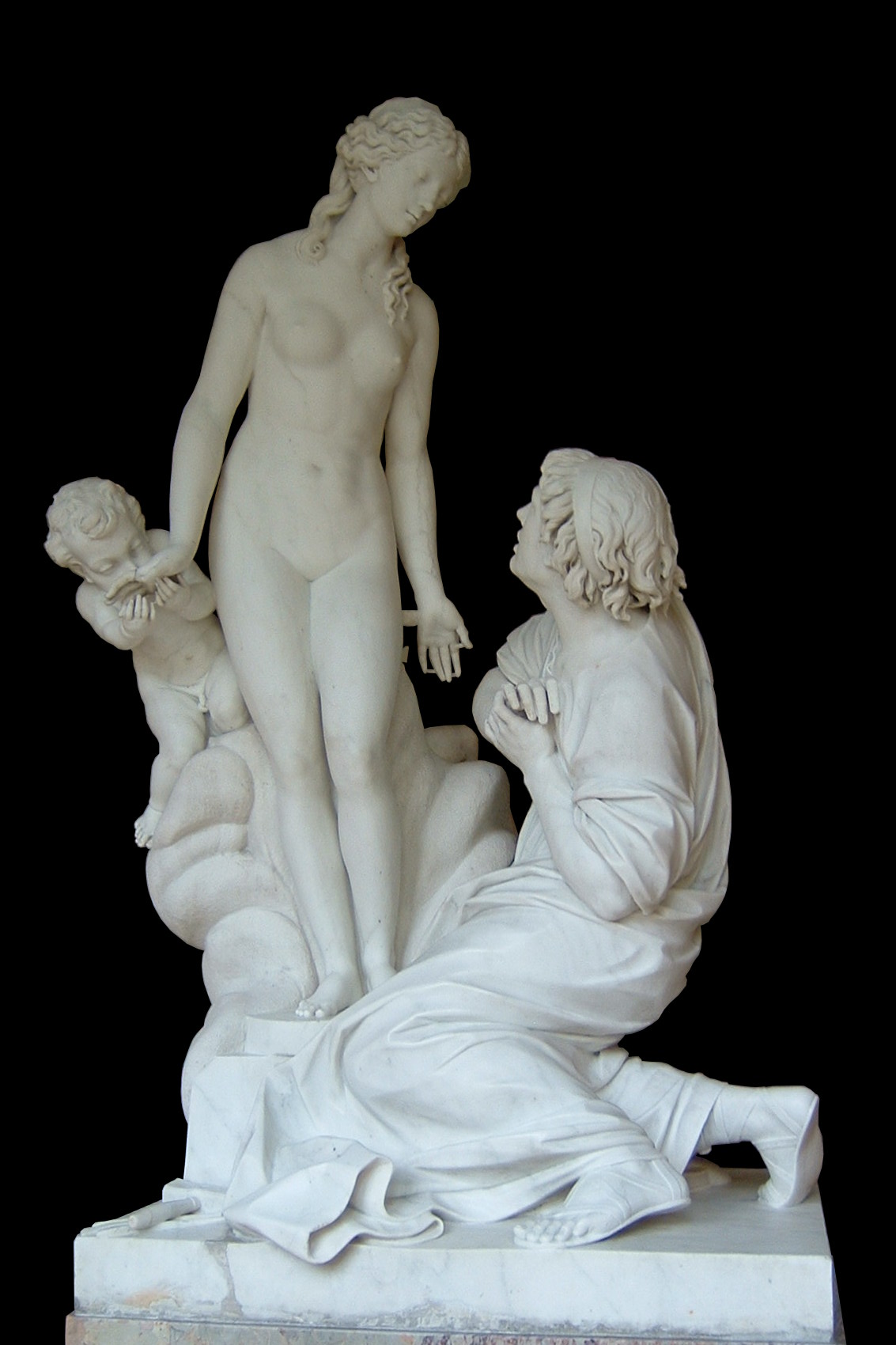Étienne Maurice Falconet on:
[Wikipedia]
[Google]
[Amazon]
 Étienne Maurice Falconet (1 December 1716 – 24 January 1791) was a French
Étienne Maurice Falconet (1 December 1716 – 24 January 1791) was a French
 He remained at the Sèvres post until he was invited to Russia by
He remained at the Sèvres post until he was invited to Russia by
 Étienne Maurice Falconet (1 December 1716 – 24 January 1791) was a French
Étienne Maurice Falconet (1 December 1716 – 24 January 1791) was a French baroque
The Baroque (, ; ) is a style of architecture, music, dance, painting, sculpture, poetry, and other arts that flourished in Europe from the early 17th century until the 1750s. In the territories of the Spanish and Portuguese empires including ...
, rococo
Rococo (, also ), less commonly Roccoco or Late Baroque, is an exceptionally ornamental and theatrical style of architecture, art and decoration which combines asymmetry, scrolling curves, gilding, white and pastel colours, sculpted moulding, ...
and neoclassical sculptor, best-known for his equestrian statue of Peter the Great
Peter I ( – ), most commonly known as Peter the Great,) or Pyotr Alekséyevich ( rus, Пётр Алексе́евич, p=ˈpʲɵtr ɐlʲɪˈksʲejɪvʲɪtɕ, , group=pron was a Russian monarch who ruled the Tsardom of Russia from t ...
, the ''Bronze Horseman
The ''Bronze Horseman'' (russian: link=no, Медный всадник, literally "copper horseman") is an equestrian statue of Peter the Great in the Senate Square in Saint Petersburg, Russia. It was opened to the public on 7 (18) August ...
'' (1782), in St. Petersburg, Russia, and for the small statues he produced in series for the Royal Sévres Porcelain Manufactory
Life
Falconet was born to a poor family inParis
Paris () is the capital and most populous city of France, with an estimated population of 2,165,423 residents in 2019 in an area of more than 105 km² (41 sq mi), making it the 30th most densely populated city in the world in 2020. Si ...
. He was at first apprenticed to a carpenter, but some of his clay figures, with the making of which he occupied his leisure hours, attracted the notice of the sculptor Jean-Baptiste Lemoyne, who made him his pupil. One of his most successful early sculptures was of Milo of Croton, which secured his admission to the membership of the Académie des beaux-arts in 1754.
He came to prominent public attention in the Salon
Salon may refer to:
Common meanings
* Beauty salon, a venue for cosmetic treatments
* French term for a drawing room, an architectural space in a home
* Salon (gathering), a meeting for learning or enjoyment
Arts and entertainment
* Salon ( ...
s of 1755 and 1757 with his marbles of ''L'Amour'' and the ''Nymphe descendant au bain'' (also called ''The Bather''), which is now at the Louvre
The Louvre ( ), or the Louvre Museum ( ), is the world's most-visited museum, and an historic landmark in Paris, France. It is the home of some of the best-known works of art, including the ''Mona Lisa'' and the '' Venus de Milo''. A central ...
. In 1757 Falconet was appointed director of the sculpture atelier of the new ''Manufacture royale de porcelaine'' at Sèvres
Sèvres (, ) is a commune in the southwestern suburbs of Paris, France. It is located from the centre of Paris, in the Hauts-de-Seine department, Île-de-France region. The commune, which had a population of 23,251 as of 2018, is known for ...
, where he brought new life to the manufacture of small sculptures in unglazed soft-paste porcelain figurines that had been a specialty at the predecessor of the Sèvres manufactory, Vincennes
Vincennes (, ) is a commune in the Val-de-Marne department in the eastern suburbs of Paris, France. It is located from the centre of Paris. It is next to but does not include the Château de Vincennes and Bois de Vincennes, which are attache ...
.
The influence of the painter François Boucher
François Boucher ( , ; ; 29 September 1703 – 30 May 1770) was a French painter, draughtsman and etcher, who worked in the Rococo style. Boucher is known for his idyllic and voluptuous paintings on classical themes, decorative allegories ...
and of contemporary theater and ballet are equally in evidence in Falconet's subjects, and his sweet, elegantly erotic, somewhat coy manner. Right at the start, Falconet created for Sèvres a set of white biscuit table garnitures of putti
A putto (; plural putti ) is a figure in a work of art depicted as a chubby male child, usually naked and sometimes winged. Originally limited to profane passions in symbolism,Dempsey, Charles. ''Inventing the Renaissance Putto''. University o ...
(Falconet's ''Enfants''), illustrating the Arts, meant to complement the manufacture's grand dinner services. The fashion for similar small table sculptures spread to most of the porcelain manufacturies of Europe.
 He remained at the Sèvres post until he was invited to Russia by
He remained at the Sèvres post until he was invited to Russia by Catherine the Great
, en, Catherine Alexeievna Romanova, link=yes
, house =
, father = Christian August, Prince of Anhalt-Zerbst
, mother = Joanna Elisabeth of Holstein-Gottorp
, birth_date =
, birth_name = Princess Sophie of Anha ...
in September 1766. At St Petersburg
Saint Petersburg ( rus, links=no, Санкт-Петербург, a=Ru-Sankt Peterburg Leningrad Petrograd Piter.ogg, r=Sankt-Peterburg, p=ˈsankt pʲɪtʲɪrˈburk), formerly known as Petrograd (1914–1924) and later Leningrad (1924–1991), i ...
he executed a colossal statue of Peter the Great
Peter I ( – ), most commonly known as Peter the Great,) or Pyotr Alekséyevich ( rus, Пётр Алексе́евич, p=ˈpʲɵtr ɐlʲɪˈksʲejɪvʲɪtɕ, , group=pron was a Russian monarch who ruled the Tsardom of Russia from t ...
in bronze, known as the ''Bronze Horseman
The ''Bronze Horseman'' (russian: link=no, Медный всадник, literally "copper horseman") is an equestrian statue of Peter the Great in the Senate Square in Saint Petersburg, Russia. It was opened to the public on 7 (18) August ...
'', together with his pupil and stepdaughter Marie-Anne Collot. In 1788, back in Paris he became director of the Académie des beaux-arts. Many of Falconet's religious works, commissioned for churches, were destroyed at the time of the French Revolution
The French Revolution ( ) was a period of radical political and societal change in France that began with the Estates General of 1789 and ended with the formation of the French Consulate in November 1799. Many of its ideas are conside ...
. His work on private commission fared better.
He found time to study Greek
Greek may refer to:
Greece
Anything of, from, or related to Greece, a country in Southern Europe:
*Greeks, an ethnic group.
*Greek language, a branch of the Indo-European language family.
**Proto-Greek language, the assumed last common ancestor ...
and Latin
Latin (, or , ) is a classical language belonging to the Italic languages, Italic branch of the Indo-European languages. Latin was originally a dialect spoken in the lower Tiber area (then known as Latium) around present-day Rome, but through ...
, and also wrote several brochures on art: Denis Diderot
Denis Diderot (; ; 5 October 171331 July 1784) was a French philosopher, art critic, and writer, best known for serving as co-founder, chief editor, and contributor to the '' Encyclopédie'' along with Jean le Rond d'Alembert. He was a promi ...
confided to him the chapter on "Sculpture" in the ''Encyclopédie
''Encyclopédie, ou dictionnaire raisonné des sciences, des arts et des métiers'' (English: ''Encyclopedia, or a Systematic Dictionary of the Sciences, Arts, and Crafts''), better known as ''Encyclopédie'', was a general encyclopedia publis ...
'', separately released by Falconet as ''Réflexions sur la sculpture'' in 1768. Three years later, he published ''Observations sur la statue de Marc-Aurèle'', which may be interpreted as the artistic program for his statue of Peter the Great. Falconet's writings on art, his ''Oeuvres littéraires'' came to six volumes when they were first published, at Lausanne
, neighboring_municipalities= Bottens, Bretigny-sur-Morrens, Chavannes-près-Renens, Cheseaux-sur-Lausanne, Crissier, Cugy, Écublens, Épalinges, Évian-les-Bains (FR-74), Froideville, Jouxtens-Mézery, Le Mont-sur-Lausanne, Lugrin (FR ...
, in 1781–1782.
Falconet's somewhat prettified and too easy charm incurred the criticism of the ''Encyclopædia Britannica'' Eleventh Edition:
"His artistic productions are characterized by the same defects as his writings, for though manifesting considerable cleverness and some power of imagination, they display in many cases a false and fantastic taste, the result, most probably, of an excessive striving after originality."
In 2001/2002, when the Musée de Céramique at Sèvres mounted an exhibition of Falconet's production for Sèvres, 1757–1766, its subtitle was " l'art de plaire" ("the art of pleasing."Family
The painter Pierre-Étienne Falconet was his son.Notes
External links
* {{DEFAULTSORT:Falconet, Etienne Maurice 1716 births 1791 deaths 18th-century French sculptors French male sculptors Russian male sculptors Rococo sculptors Artists from Paris Members of the Académie des beaux-arts Contributors to the Encyclopédie (1751–1772) French male non-fiction writers 18th-century French male writers 18th-century sculptors from the Russian Empire 18th-century French male artists